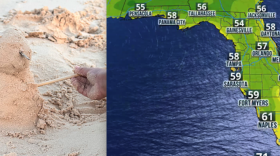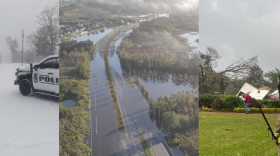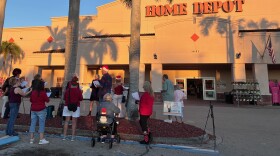Likely soon-to-be Hurricane Helene is growing so powerful that it will change the shape of Florida’s West Coast – all of it.
“The coastal change forecast for Helene's impact to the Florida west coast is significant because Helene is predicted to be a large and powerful storm with high waves and storm surge, even if it stays offshore,” said Kara Doran, a U.S. Geological Service coastal scientist. “With Florida's low elevation and this significant forecast, we might see more flooding immediately behind dunes and into beachside communities.”
Currently, 94% of the sandy beaches on Florida’s West Coast are forecasted to become inundated—meaning continuously covered by ocean water — from Helene, according to the USGS coastal change forecast issued Tuesday.
The USGS said it's a "worst-case scenario” and “the most severe level of coastal change” will unfold, reshaping Florida’s Gulf of Mexico shoreline due to overwash and erosion caused by Helene’s massive reach.
That can cause flooding behind sand dunes that may impact coastal communities.
The USGS said it's a "worst-case scenario” and “the most severe level of coastal change” will unfold, reshaping Florida’s Gulf of Mexico shoreline
USGS experts estimate Helene’s waves and surge have the potential to cause 100 percent of all ocean-facing beaches on Florida's West Coast to experience erosion and overwash, which happens when water levels reach higher than the top of dunes.
When a beach is overwashed, sand can be pushed and deposited inland, causing significant changes to coastal landscapes and blocking roadways.
The changes can reduce the height of protective sand dunes, alter beach profiles, and leave areas behind the dunes more vulnerable to future storms.
According to the National Hurricane Center, Helene may bring life-threatening storm surge along with hurricane-force winds, and heavy rain.
The USGS coastal change forecasts will continue to be updated here as the storm approaches land and real-time coastal change forecasts for individual locations along the coast are available.
Environmental reporting for WGCU is funded in part by VoLo Foundation, a non-profit with a mission to accelerate change and global impact by supporting science-based climate solutions, enhancing education, and improving health.
Sign up for WGCU's monthly environmental newsletter, the Green Flash, today.
WGCU is your trusted source for news and information in Southwest Florida. We are a nonprofit public service, and your support is more critical than ever. Keep public media strong and donate now. Thank you.








